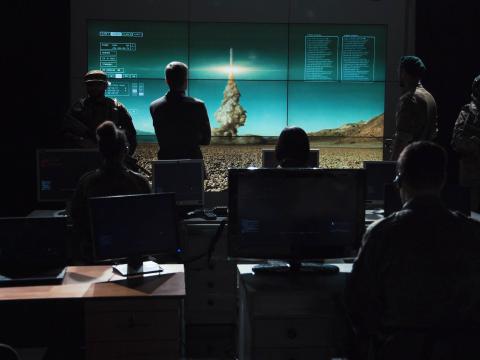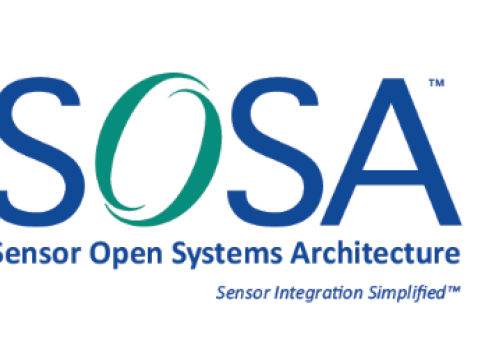Intelligence Community Strives for Common Research Efforts
The U.S. Office of the Director of National Intelligence is matching the technology needs of the intelligence community to the capabilities of the private sector with the goal of speeding innovation to the user community as well as introducing community specialists to new technologies.
This program eschews individual matchmaking between separate intelligence disciplines in favor of a broad effort that encompasses all the technological needs of the intelligence community. The idea is to cast a net across the intelligence research community to collect ideas and innovations that might be applied to areas where they are not even known.
And this matchmaking is not limited to private sector technologies. Federal research facilities that traditionally are not connected to the intelligence community also are part of the potential solution mix.
This partnership is at the core of the Intelligence Science and Technology Partnership, or In-STeP. It is based in the Office of the Director of National Intelligence (ODNI) science and technology division, which is under the Office of Acquisition, Technology and Facilities.
Aligning public and private sector efforts requires having a clear understanding of community needs as well as knowing where industry is going, points out David M. Isaacson, lead for In-STeP. In-STeP aims for both shared ownership and shared responsibility, he says. What might enable In-STeP to succeed where other government-industry partnerships have faded into obscurity is that industry will have a role in developing the strategy that will be pursued, explains David A. Honey, director of science and technology and assistant deputy director of national intelligence for science and technology.
What sets In-STeP apart from previous efforts to match commercial technologies with intelligence community customers is the broad approach it takes. In-STeP tries to understand the future capability needs of the intelligence community from the perspective of national intelligence managers (NIMs), Honey notes. The community’s science and technology investment strategy previously focused on the mission needs of each agency. But, because of the NIM construct, a broader integrated view is available across the separate elements. This helps provide a more comprehensive understanding of which future capability needs will be important—and where science and technology developments will be needed to meet these future needs, he says.
“It’s not that the individual elements are not important,” Honey continues. “They are now one part of the puzzle, because the view that we’re taking is much broader in scope.”
One of the keys to In-STeP is the intelligence community’s “Science and Technology Investment Landscape,” which covers fiscal years 2015 to 2019. Covering the breadth of the intelligence community, it represents the community’s first attempt to link the needs of integrated intelligence with future science and technology development. Honey describes it as the big first milestone in the In-STeP process, “doing the translation from ‘NIMspeak’ to techspeak had to occur for the science and technology community to be able to engage to try to meet those future capability needs.”
The translation from “NIMspeak” to techspeak is the one task that keeps Honey up at night, he admits. The program must stay up with where the NIMs’ concerns are moving. An outreach campaign focuses on industry and other parts of the federal government, and an inreach campaign contacts people within the ODNI to stay current with their own direction. The program must continue to provide industry with the proper direction—translated from NIMs.
He notes that typically, asking customers to define the solutions they want is a mistake. In some cases, incremental improvements to existing capabilities are useful and worth pursuing, but having a game-changer will require focusing first on the customer’s problems, Honey says. The Landscape report identified those problems, and this in turn fed a request for information (RFI) released by the office a year ago.
Isaacson emphasizes there are no limits on the solutions, and this approach was factored into the RFI. “We want all kinds of feedback that can be constructive to what we are trying to do,” he says. “One of the things the RFI asked for was, ‘What are you doing against that particular need set in the Landscape?’” he states. “The second part of that was, ‘What are you working on that could be relevant to the intelligence community that maybe we didn’t capture?’ That is the flexibility of what we’re trying to do.” The third part of the RFI requested feedback on improving the process, he adds.
“We saw an overwhelming response from industry, and also [Department of Energy] labs and [federally funded research and development centers] also provided a response back to the Landscape document, which was released through the RFI,” Honey relates. “I think we have a pretty good idea of a body of funded activity—both [independent research and development] as well as other government contracts—against the needs that were articulated in the Landscape document.”
The responses to the RFI pointed out the need for an enduring engagement mechanism to reach out to the intelligence community, Isaacson allows. The “cross-pollination” of letting the NIMs know about solutions while informing industry about intelligence community needs and direction constitutes a transparency “that everybody has been begging for,” he asserts.
“The RFI opened the door for the input of ideas against which there are no needs that we stated through the Landscape document,” Honey offers. “The RFI contained this other mechanism for people to contribute thoughts. As we move forward, we actually are going to increase our outreach on that particular theme.”
Out of all of the needs cited in the Landscape report, less than 5 percent did not have some type of funded research taking place, Honey relates. He says he was surprised at how much funded work already was striving to solve problems for the intelligence community. Where In-STeP serves a role is that it ties this research together in terms of everywhere it could solve a problem. In many cases, the government funding authority for a particular research thrust may not understand how its activities could be applied to other problems. However, the industry side is motivated to find new applications for its work, Honey observes.
“By going to industry, we ended up with a much more thorough analysis of what they’re working on, how it may be applied to these problems, than if we had gone the other way to the funding agencies,” he declares. “That’s why we now see a much greater opportunity for coverage to use existing investments to meet intelligence community needs than we otherwise would have realized.”
After the office issued the RFI, it compiled the responses and made them available to functional managers and others across the community who have relevant clearances. “We’re protecting the proprietary information, but we’re also trying to get it into the hands of a number of people to act on,” Isaacson says. “We are pushing industry responses out to the relevant people.”
The office clustered many of those partner responses, from which it developed a road mapping activity with industry. This follows the program goal of going from the capabilities to the specific technologies that would support those capabilities, and then identifying the basic research challenges related to those specific technologies, Isaacson offers. This generates a traceable path for the need for specific research.
Honey points out this is a part of the program’s objective for industry to work collaboratively with government in a precompetitive phase. In-STeP is interested in hearing from precompetitive industry analyses in which businesses collaborate as a group to develop solutions.
He notes that a number of technology road maps have had a significant effect on research and development. For example, the lithography road map that led to advances in computer chips was “an amazingly predictive road map—not just of where technology could go, but the impact it would have on users and on companies as a whole,” Honey points out. For each feature size reduction that occurred on that road map, chip makers could understand the next chip architecture that would emerge. Software writers accordingly could foresee the applications they would develop with each generational advance.
“For our purposes, these industry-led road maps will be similarly informative,” he declares.
Both Honey and Isaacson offer that companies should not have any problem sharing proprietary technology. These firms have a lot of experience sharing information, as they often participate in standards committees in which they must determine product development specifications—in some cases, in an international forum.
After industry achieves consensus, In-STeP will work to couple this information with the intelligence community’s activities so everyone can benefit from it, Honey says. He points out that In-STeP resides in the ODNI Office of Acquisition, Technology and Facilities, and this enables it to work directly with the ODNI’s acquisition elements. “They are our partners in trying to find technology that the programs can use,” he states, adding that In-STeP might help enhance a program of record or mitigate risk in a program by offering an alternative if a technology path does not work as intended, for example. Most of all, In-STeP can make the acquisition community aware of “potential game-changers” as programs evolve.
“There are two big insertion points,” Honey continues—“helping the programs of record where they need help, but also making the acquisition managers aware of potential game-changers that otherwise wouldn’t be on their radar screen.”
The greatest effect of In-STeP may be in risk mitigation, Honey offers. “An acquisition program manager is held accountable to three parameters: cost, schedule and performance. There is risk in each of those, and the greatest risk factor in all of those is in either technology readiness, technology maturity or certain assumptions about how a technology is going to develop—and then it doesn’t.
“Providing this ability to understand the technology trade space, where it is and what the other funded activities are will be a great benefit to the acquisition managers for managing risk in those three areas,” he concludes.
Isaacson believes quality will improve to a greater extent than speed when it comes to producing solutions that are implemented in the intelligence community. “The transparency allows far more educated choices as far as what’s going on,” he says. Honey adds, “Better solutions translate to better mission success.”
The future of In-STeP may not be as structured as the current format. Isaacson notes the NIMs are moving away from a cyclical approach to issuing unified intelligence strategies to more of an ad hoc publication basis. He hopes that In-STeP will be able to keep up to date as those strategies are produced. “We can’t really create something new until they create something new,” he allows.
“It will be a 24/7, all-year-round process,” Honey adds. “As the NIMs’ understanding of the future changes, then we are going to analyze that and communicate it to the broader technical community, to include industry.”
For additional information, email S&TInvestment@dni.gov.





Comments